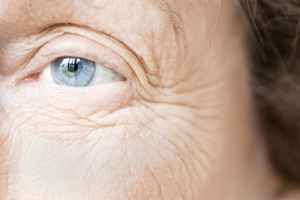When it comes to your face, it’s ok to be picky. It’s also ok to do a lot of research when it comes to altering it to achieve a result that you have been after for a long time.
 Our eyes are often the first part of our face to catch anyone’s attention. How often have you heard that the eyes are the window to the soul? If you are ashamed of how your eyes look, this could affect your thoughts, words and consequently your actions. Many people feel that there is an excessive amount of droopy skin around their eyes or that the extra fat underneath them is taking attention away from the rest of their face. For these people a blepharoplasty has been an option and for many of them it has helped them to achieve the look they desire to present to the world. However any surgery comes with physical as well as financial costs. Before undertaking any surgery it is most important to understand what kind of pressure you are putting your body through and how long it will take for you to feel like your normal self again.
Our eyes are often the first part of our face to catch anyone’s attention. How often have you heard that the eyes are the window to the soul? If you are ashamed of how your eyes look, this could affect your thoughts, words and consequently your actions. Many people feel that there is an excessive amount of droopy skin around their eyes or that the extra fat underneath them is taking attention away from the rest of their face. For these people a blepharoplasty has been an option and for many of them it has helped them to achieve the look they desire to present to the world. However any surgery comes with physical as well as financial costs. Before undertaking any surgery it is most important to understand what kind of pressure you are putting your body through and how long it will take for you to feel like your normal self again.
Blepharoplasty Recovery Time
In deciding to undergo a blepharoplasty you will probably want to know how long it will take for you to recover from the surgical removal of excess skin, fat and muscle around your eyes. The answer is that it really depends on exactly what procedure you get and on your bodies response to the surgery. Here are some guidelines on how long you might be out for, and what kinds of post op pain, swelling and bruising you might experience.
Recovery for overnight vs outpatients
 Whether you have upper eyelid surgery, lower eyelid surgery or both, the procedure can be conducted either as an outpatient or can require a patient to stay in an overnight facility. Be mindful that even if you have the procedure as an outpatient, you will not be able to drive and will need to have a licensed driver who will be able to take you home. Not only will you be feeling groggy from the local anesthesia and possible sedation but you will also possibly have blurred eyesight, double vision or sensitivity to light from the surgery and ointments that will be applied to the eye area. Your vision will most probably return to normal within the first two or three days.
Whether you have upper eyelid surgery, lower eyelid surgery or both, the procedure can be conducted either as an outpatient or can require a patient to stay in an overnight facility. Be mindful that even if you have the procedure as an outpatient, you will not be able to drive and will need to have a licensed driver who will be able to take you home. Not only will you be feeling groggy from the local anesthesia and possible sedation but you will also possibly have blurred eyesight, double vision or sensitivity to light from the surgery and ointments that will be applied to the eye area. Your vision will most probably return to normal within the first two or three days.
The care the patient receives in the first 24 hours after surgery can impact the amount of swelling the patient deals with later in the recovery process. If you stay in a care facility overnight, a nurse will help you care for the eye area in the way that the doctor deems necessary, setting you up for the least amount of swelling moving forward. For example, they will replace ice packs on time, cleanse the eye area thoroughly and make sure your healing takes place as smoothly as possible.
 The area around your eyes will be bruised and swollen. The bruising can descend into the cheek area and make the face seem more swollen. This is normal and if occurring in the first week after surgery and should not be a cause for alarm. The actual eye can be watery or dry, depending on your bodies’ reaction to the procedure. The majority of the swelling and bruising should dissipate within a week. Minor swelling can continue for up to a year.
The area around your eyes will be bruised and swollen. The bruising can descend into the cheek area and make the face seem more swollen. This is normal and if occurring in the first week after surgery and should not be a cause for alarm. The actual eye can be watery or dry, depending on your bodies’ reaction to the procedure. The majority of the swelling and bruising should dissipate within a week. Minor swelling can continue for up to a year.
Most patients will have some sort of tape holding the skin in place and there may also be bandages applied over the eyes (transconjunctival blepharoplasty patients usually do not need to cover their eyes post op). It is most important to follow your doctor’s instructions in regard to the bandages and cleansing of the eye area after surgery. Otherwise the contours you wanted to get from the surgery could be compromised.
Back to work
Recovery time varies from patient to patient, but for the most part, patients will be able to return to work within the first two weeks following the date of their surgery. The exact date should be consulted with your doctor per the specifications of the patients healing process.
It will take approximately one week for the swelling and bruising to reach a point where patients will be able to be seen in public with make up and have their procedure be unnoticed. It is usually at the one-week mark, when the stitches are removed. The pain may still persist and patients should follow doctor’s instructions in regard to painkillers post op.
By the end of two weeks the bruising should have dissipated to a more yellowish color that will be much easier to hide. And the make up required to have the procedure be unnoticed will be a lot less.
Blepharoplasty after care
 After surgery, it is most important to rest with your head elevated to avoid any extra swelling.
After surgery, it is most important to rest with your head elevated to avoid any extra swelling.
Your doctor may prescribe, eye ointments, drops, pain medication and anti-biotics. Your doctor may also have you apply ice packs to the outside of the eye area. It is most important to follow your doctors post op instructions carefully.
Activities that should be avoided the first couple of weeks after surgery include, heavy lifting, strenuous activity, exercise and use of contacts. If you have compromised eyesight normally, you will most likely be told to use actual glasses for the first two to three weeks after the procedure.
Blepharoplasty complications – lower and upper
As with any procedure, whether you have a lower or upper blepharoplasty, there are complications and risks that might affect you. The most commonly known risks are:
- Infection
- Loss of Vision
- Retraction of eyelids
- Hemorrhage (mainly for patients on blood thinners)
- Results are not quite as you would have liked. In these cases it’s important to note that it’s easier to remove more skin than to try and put skin back. So an initial conservative approach may be best for you.
Blepharoplasty scars
When performing an upper or lower eyelid blepharoplasty, it is the doctors hope that the scars will not extend beyond the eyelid crease and therefore will not be visible to most people who are unaware that the patient has had the surgery.
If a scar is highly visible, there is scar revision treatment available. It’s best to consult your doctor to see if this is an option for you.




